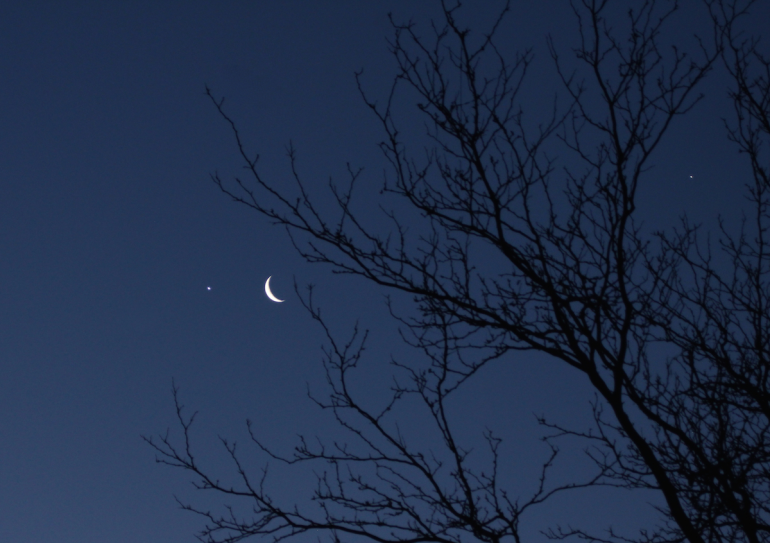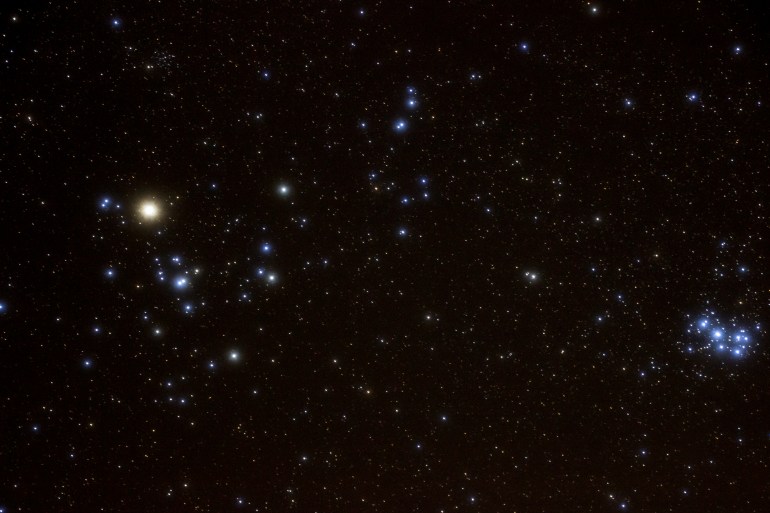There is nothing more exciting than observing an interesting astronomical phenomenon in the sky, especially when such phenomena require no expensive or complicated equipment other than your naked eyes. All that is required is to climb or go to the roof of your house. With the knowledge of the nature of the astronomical phenomenon, go to the street to follow it, when it occurs and how to observe it, which we will give you in the following lines.
Sun and Moon phenomena
In the year 2024, the planet Earth will see two solar eclipses, unfortunately we in the Arab countries will not be able to observe one of them because it occurs from the eighth of April and is visible on the North American continent and it is a total eclipse, and the second occurs on the second of October and is visible in the south of the South American continent. And it will be an annular eclipse.
As for the lunar eclipse, the Western Arab countries, starting with Libya, will see a “penumbra” type eclipse before sunrise on March 25. In this case, the light of the moon is reduced by a small amount, which is not noticeable except on close inspection. For the Moon entering the Earth's penumbra. To understand the idea, imagine that you are standing under a lamp post at night and you can see two shadows below you, the first heavy and the second light, so the second is a penumbra.
At dawn on September 18, the Arab world will see a partial eclipse beginning at exactly 05:12 Mecca time, during which the moon's bright side will be slightly eroded and the eclipse will reach its maximum. Exactly 05:44 then return to its original position. .
Super Moon
A supermoon is a fun event for adults and children alike. It occurs when the moon is closest to Earth and the full moon phase coincides, making the moon appear brighter and larger than usual, especially when you immediately think about it and the sunset when the moon is on the horizon.
In 2024, the Arab world will witness three supermoons, the first on September 18, the second on October 17 and the third on November 15. On those three evenings, you can be out looking at the moon all night long after sunset, all it takes is your naked eyes.

meteor shower
On normal nights, you may observe one or two bright meteors, but during certain seasons the number of meteors increases steadily, and can reach more than a hundred meteors per hour. This happens when the Earth travels through space and passes by the remnants of a comet or asteroid. These rocky remnants enter the Earth's atmosphere and burn up, so we see meteors.
2024 is considered good for major meteor showers in the Arab world, especially on the evening of August 12, when the Perseid meteor shower is at its peak, and you can see 90 to 100 meteors per hour in distant areas. In general, the best observation of meteors is in remote areas, but the number of meteors decreases significantly in cities, for example, in the Perseids, you can see about ten meteors in the city.
The moon sets early that night, leaving meteor enthusiasts the time between ten in the evening and sunrise the next day, and the intensity of the meteors increases as dawn approaches.
As for the nights of December 13th and 14th, you can observe the peak of the Geminid meteor shower, but as the Moon lights up the sky that night, the number of meteors will seriously decrease, but it will still be a delightful shower due to the number of meteors. Those nights break the limit of 100 meteors per year.

Moon conjunction with planets
Planets shine like stars in the night sky, and this happens only because they reflect sunlight like the moon, but because they are so far from the earth, they appear smaller than stars, and sometimes these planets are combined with the moon or with each other. Others, creating thought-provoking visuals.
At its closest distance to the Moon on the evening of January 18, you can see Jupiter shining a clear white. As for a planet Sat Usually glowing yellow, it will be at its best relative to the Moon in 2024, when it will be closest to the Moon on July 24, August 21, September 17, October 14 and November 11.
Mars appears bright red in the sky. Earlier people thought it was the color of blood, so they associated Mars with war and anger, but now we know that oxidation is responsible for that red color. Some iron compounds on the surface of the planet.
In 2024, the best views of the Moon after Mars will be on the evenings of November 20 and December 18, as the red planet is visible at dawn almost all year round, but it is last seen in the evening. months of the year.
The Moon can be associated with more than one planet.On January 8, 2024, in the evening and dawn, you will notice that the Moon is near both the star Antares and Venus during the waning crescent phase. White in color, and Mercury shining in yellow. In a mesmerizing scene.
Before sunrise on April 6th, you'll notice the Moon standing next to the red planet Mars and Saturn, which normally glows yellow.
Planets can line up in mind-blowing scenes. Venus will be closest to Saturn at dawn on April 11th, and Mars will be closest to Jupiter at dawn on August 14th.

Moon's conjunction with Nakshatras
Sometimes the Moon stands next to a group of bright stars, such as Antares, the brightest star in the constellation Scorpius, which is a large red giant at the end of its life and this type of star explodes at the end. Life creates a giant supernova. In the early morning hours of May 24 and in the evenings of July 17 and August 14, the moon can be seen standing close to Antares with its vivid red hue.
As for the star Aldebaran, the brightest in the constellation Taurus, it is named after an Arabic story that tells of a shepherd who fell in love with Pleiades and wanted to propose to her, but she refused. : “I have nothing to do with this sprout” (meaning poor poor), so he arranges for her without ceasing to propose, I wish, but she refuses, hence the name.
Aldebaran is a red giant. If it were the size of a football, the Sun would be the size of a grape, for example, the Moon's conjunction with Aldebaran this year in remarkable scenes, for example, you can see it in the distance. From the Moon on the nights of January 21 and February 17, but at dawn on June 31: the Moon passes next to three: the red star Aldebaran, Mars and Jupiter, this spectacular scene repeats itself at dawn on August 27.
——————————————-
Source:
- Stellarium is free software and data Solar Eclipse and Lunar Eclipse

“Award-winning beer geek. Extreme coffeeaholic. Introvert. Avid travel specialist. Hipster-friendly communicator.”